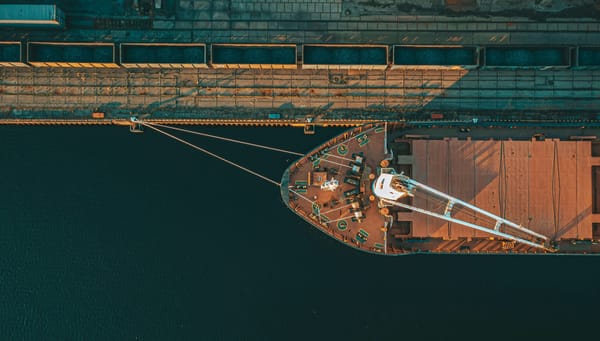Outlaw Ocean on the Goldfish API

We’ve entered a No Fun Zone this week because forced labor in supply chains isn’t a subject of debate with Larry. If you haven’t heard of the Outlaw Ocean Project, it is a nonprofit focused on investigative journalism of crime in seafood supply chains. If you work in seafood, you are likely familiar with their work. Last year’s widely covered investigative reporting on China’s squid fishing fleet led to high-level scrutiny from Congress and a flurry of sourcing changes and commitments from the seafood industry, including Lund’s Fisheries and Sysco. Over 350 vessels accused of human rights violations and illegal fishing have been publicly named, some of which have been petitioned and are under consideration for action by US Customs and Border Protection and the US Department of Treasury. It's one of those things you have to put a real effort into ignoring.
Public listings like this matter. Companies face real reputational risk over labor concerns. So, by popular demand, the Goldfish API (and 🏖️ Sandbar) now includes the ability to screen vessels against Outlaw Ocean-designated risks.
You can now check if Outlaw Ocean has identified a vessel by using the isOutlawOcean and OutlawOceanDetails as output variables when searching for a vessel, in addition to your IUU and WRO checks. We’ve already found some interesting matches where a vessel may not be on an IUU or WRO list but is on Outlaw Ocean and vice versa.
The best way to understand our API and the power of a unified data source is to look at a vessel; let’s pick the CHANG TAI 802.
The China-flagged 🇨🇳 CHANG TAI 802 is not blacklisted on any public registry, nor has it been blocked from US trade. Outlaw Ocean, however, identified it.
In the image of the API below, you can see that in addition to the isOutlawOcean identifier, we’ve incorporated Outlaw Ocean’s full justification in the OutlawOceanDetail output [crimes and concerns], which in this case includes three suspected instances of labor abuse onboard this vessel in recent years.
Note: Two of these reports have no source listed, and one is from the environmental advocacy organization Greenpeace, so we recommend vigilance when interpreting these results.
By aggregating multiple public sources, we can see that the Chang Tai 802 is not only absent from any blacklists, it is legally authorized to operate in two different Regional Fishery Management Organizations, the North Pacific Fisheries Commission and the South Pacific Regional Fisheries Management Organisation. We can also see that the vessel fishes for squid legally and can even validate its permits and the fishing gear types it is registered to use.
Our API supports other outputs about the vessel, including dimensions, construction, and the number of crew members and operators. The real magic starts to happen when you incorporate this level of due diligence with harvest data by asking if the fishing event you see in your traceability system matches the authorized activities for this vessel.
There are many reasons why a vessel accused of illegally fishing does not end up on a blacklist, including being innocent. Technically, we've identified a legal squid fishing vessel operating in the Pacific Ocean. It has, however, been accused—but not convicted—of labor abuse in recent years. Grey areas like this highlight the importance of operating with a complete picture. Goldfish provides teams with the insights that allow your organization to make informed, strategic decisions about your supply chain.
Until next week, ✌️ from your friendly neighbourhood Product Team





